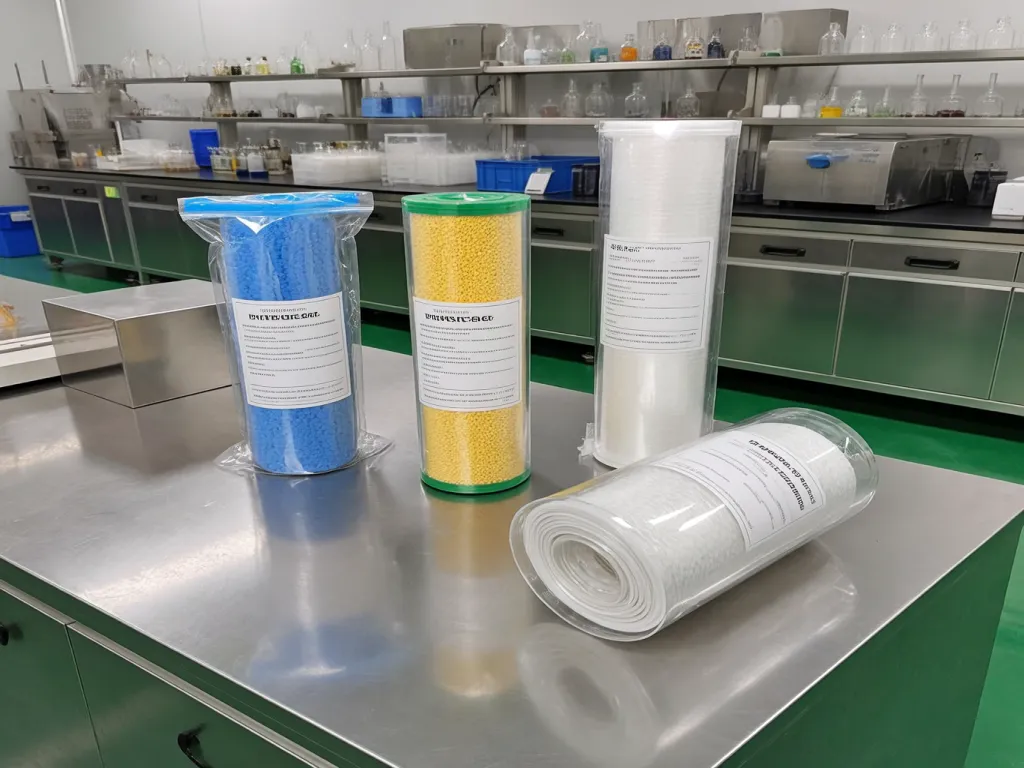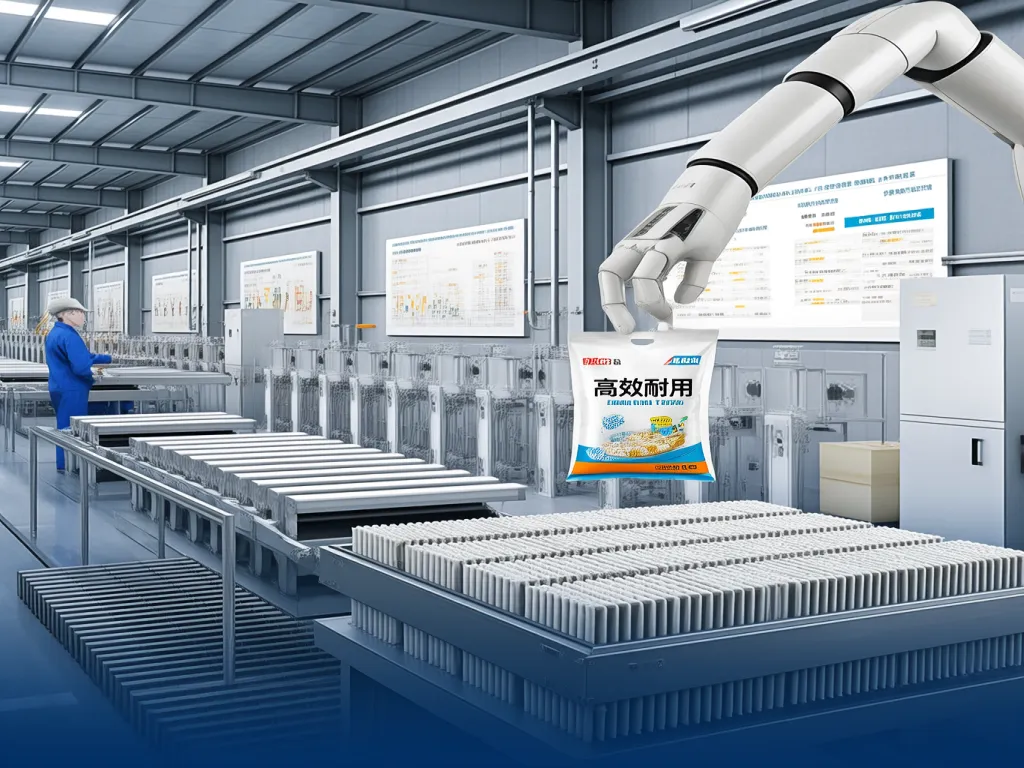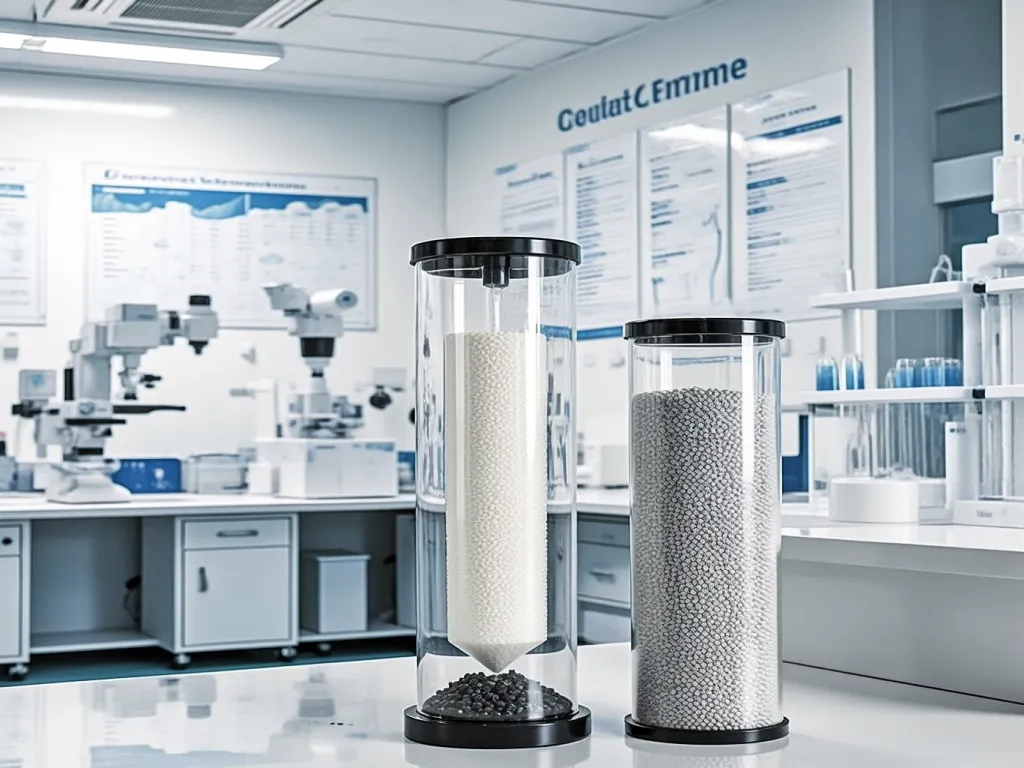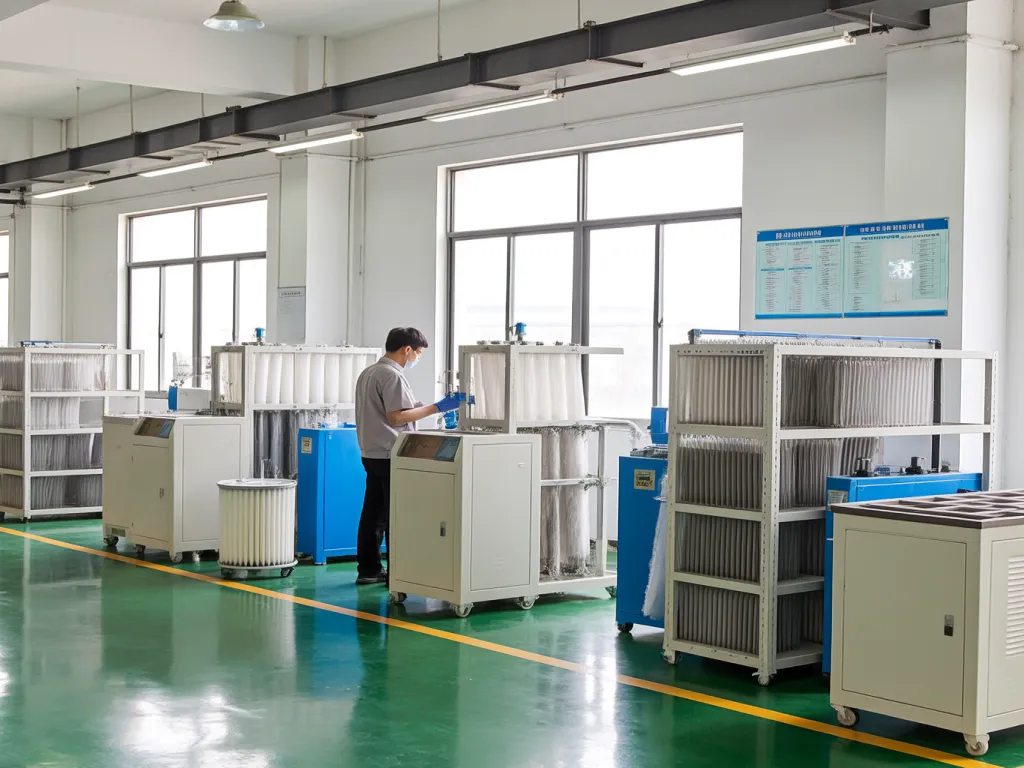Mastering Vacuum Filter Bag Selection
When it comes to industrial filtration, the humble vacuum filter bag plays a starring role. Yet, selecting the right one for your equipment isn’t as straightforward as grabbing the first option on the shelf. From withstanding harsh chemicals to capturing microscopic particles, the material, efficiency, and lifespan of your vacuum filter bag can make or break your system’s performance. So, how do you navigate this critical choice? Let’s dive into the nitty-gritty of vacuum filter bag selection to ensure your industrial operations run smoothly, efficiently, and cost-effectively.

Material Selection: Analyzing the Pros and Cons of Vacuum Filter Bags in Different Materials (Polyester, Polypropylene, Fiberglass, etc.) for Corrosion Resistance, Strength, and Cost
When it comes to selecting the right vacuum filter bag for your industrial application, the material choice is not just about functionality—it’s a strategic decision that impacts corrosion resistance, strength, durability, and cost. Each material—polyester, polypropylene, fiberglass, and others—brings its own set of advantages and limitations. So, how do you decide which one fits your specific industrial environment? Let’s break it down. Beyond these three, there are other materials worth considering. Nylon, for example, offers high tensile strength and good abrasion resistance but struggles with moisture absorption and UV degradation. PTFE (Teflon) bags are the ultimate in chemical resistance and can handle temperatures up to 500°F, but their high cost limits them to niche applications. So, how do you choose? Start by assessing your industrial environment. What chemicals are present? What temperatures will the bag endure? How much mechanical stress will it face? If you’re dealing with mild conditions and need a cost-effective solution, polyester is a safe bet. For highly corrosive environments, polypropylene shines. And if extreme heat or chemicals are your main concerns, fiberglass is the way to go. Remember, the right material can save you money in the long run by reducing downtime, maintenance costs, and premature replacements. Don’t just go for the cheapest option—invest in a vacuum filter bag that’s built to handle your specific challenges. Have you ever faced a filtration issue because of the wrong material choice? Share your story in the comments below!
Polyester Vacuum Filter Bags: Strength and Affordability
Polyester vacuum filter bags are a popular choice for many industrial settings due to their excellent balance of cost and performance. Polyester is known for its high tensile strength, meaning it can withstand significant pressure without tearing. This makes it ideal for environments where mechanical stress is a concern. Additionally, polyester offers good resistance to abrasion, which is crucial in applications involving coarse particles. However, polyester’s corrosion resistance is moderate. While it can handle mildly acidic or alkaline conditions, it may not be the best option for highly corrosive environments. If your operation involves strong chemicals or extreme pH levels, you might need to consider other materials. For a wholesale option of polyester filter bags, you can explore polyester pocket filter bags or polyester dust collector filter bags.

Polypropylene Vacuum Filter Bags: Chemical Resistance Champion
Polypropylene vacuum filter bags are the go-to for applications requiring superior chemical resistance. This material is highly resistant to acids, alkalis, and solvents, making it perfect for chemical processing, wastewater treatment, and other harsh environments. Polypropylene also has a lower moisture absorption rate compared to polyester, which reduces the risk of microbial growth and extends the bag’s lifespan. On the downside, polypropylene isn’t as strong as polyester when it comes to tensile strength. It’s more prone to stretching and deformation under heavy loads, so it’s not ideal for high-pressure applications. Additionally, polypropylene tends to be slightly more expensive than polyester, though the cost difference is often justified by its durability in corrosive settings.
Fiberglass Vacuum Filter Bags: High-Temperature Performance
Fiberglass vacuum filter bags are the heavyweights of the filtration world, offering exceptional thermal stability and chemical resistance. They can withstand temperatures up to 500°F (260°C), making them suitable for high-temperature applications like incinerators, boilers, and cement kilns. Fiberglass also resists most acids and alkalis, though it can be sensitive to hydrofluoric acid and strong alkalis. The trade-off? Fiberglass is brittle and lacks the flexibility of polyester or polypropylene. It’s prone to cracking if mishandled, and its abrasion resistance is lower, meaning it may not hold up well in environments with sharp or coarse particles. Fiberglass bags are also more expensive, but their ability to handle extreme conditions often makes them worth the investment for specialized applications. For wholesale fiberglass filter bags, you can consider fiberglass filter bags or carbon black fiberglass filter bags.

Filtration Efficiency Comparison: Exploring Performance of Vacuum Filter Bags with Different Precision Levels (Micron vs. Sub-Micron) in Capturing Particulates, Dust, and Harmful Gases
When it comes to industrial filtration, the precision of your vacuum filter bag can make or break your system’s efficiency. But what exactly does ‘precision’ mean here? In the world of vacuum filter bags, precision refers to the size of particles the bag can effectively capture, measured in microns (μm) or even sub-microns (less than 1 μm). Choosing the right precision level is crucial for optimizing performance, reducing downtime, and ensuring a safer working environment. Let’s dive into how micron-level and sub-micron-level vacuum filter bags stack up in real-world applications.
Micron-Level Vacuum Filter Bags: The Workhorses of Industrial Filtration
Micron-level vacuum filter bags are designed to capture particles ranging from 1 μm up to several hundred microns. These bags are the go-to choice for many industrial applications because they strike a balance between efficiency and cost-effectiveness. But how do they perform when it comes to specific contaminants?
Capturing Particulates and Dust
For industries dealing with coarse dust and larger particulates—such as woodworking, metal fabrication, or cement production—micron-level bags excel. A 10 μm filter bag, for example, can efficiently trap sawdust, metal shavings, and larger debris, preventing them from recirculating into the air or clogging downstream equipment. This not only improves air quality but also extends the lifespan of your machinery by reducing wear and tear.
Handling Harmful Gases: A Mixed Bag
While micron-level filters are great for solids, their effectiveness drops when it comes to gases and vapors. Most harmful gases, like volatile organic compounds (VOCs) or sulfur dioxide, have molecular sizes far smaller than 1 μm. This means a standard micron-level bag won’t do much to stop them. If your operation involves chemical processing or waste incineration, you’ll need additional layers of protection, such as activated carbon filters or gas-phase filtration systems.
Sub-Micron Vacuum Filter Bags: The Fine Filtration Specialists
Sub-micron vacuum filter bags take things up a notch by targeting particles smaller than 1 μm. These bags are indispensable in industries where even tiny contaminants can cause big problems—think pharmaceuticals, electronics manufacturing, or food processing.
Ultra-Fine Particulate Capture
In semiconductor fabrication, for instance, sub-micron particles can ruin entire batches of chips. A sub-micron filter bag with a precision of 0.3 μm or lower can capture these minuscule invaders, ensuring product quality and reducing waste. Similarly, in pharmaceuticals, where purity is non-negotiable, sub-micron filtration prevents cross-contamination and meets stringent regulatory standards.
Tackling Harmful Gases: Still Not a Silver Bullet
Here’s the catch: even sub-micron bags struggle with gases. While they can catch some aerosolized liquids or very fine solid particulates attached to gases, they don’t chemically neutralize or absorb gaseous pollutants. For comprehensive gas control, you’ll still need specialized solutions like scrubbers or catalytic converters.
Real-World Performance: Where Precision Matters Most
Let’s look at a couple of scenarios to see how precision affects outcomes:
Scenario 1: Automotive Paint Booths
In automotive painting, overspray consists of paint particles ranging from 1 μm to 100 μm. A 5 μm vacuum filter bag would capture most of the overspray, keeping the booth clean and reducing paint waste. However, if the facility also uses solvent-based paints, which release VOCs, a sub-micron bag alone wouldn’t suffice. You’d need a combination of high-precision filtration for particulates and activated carbon for gases.
Scenario 2: Food Processing Plants
In food processing, especially dairy or bakery operations, flour dust and milk powder can create explosive atmospheres if not properly filtered. A 2 μm filter bag would effectively capture these powders, preventing dust accumulation and fire hazards. But what about odor control? Sub-micron bags can help reduce some airborne odors by trapping fine particles, but for complete odor elimination, you’d need odor neutralizers or biofilters.
Making the Right Choice: Factors to Consider
Choosing between micron and sub-micron vacuum filter bags boils down to your specific needs:
- Particle Size Distribution: Analyze the size range of contaminants in your process.
- Regulatory Requirements: Some industries have strict limits on particulate emissions.
- Cost vs. Benefit: Sub-micron bags are pricier but necessary for ultra-clean environments.
- Maintenance: Higher precision often means more frequent replacements.
By understanding the strengths and limitations of each precision level, you can select a vacuum filter bag that delivers optimal performance without breaking the bank.

Lifespan Assessment: Analyzing Factors Affecting Vacuum Filter Bag Longevity
When it comes to industrial operations, the longevity of your vacuum filter bag isn’t just about saving money—it’s about maintaining efficiency and minimizing downtime. But what exactly determines how long your vacuum filter bag will last? Let’s break down the key factors: usage conditions, maintenance practices, and replacement cycles. By understanding these elements, you can make informed decisions to extend the lifespan of your vacuum filter bag and get the most out of your investment.
Usage Conditions: The Environment Matters
First up, let’s talk about the environment where your vacuum filter bag operates. This is perhaps the most critical factor influencing its lifespan. If your bag is exposed to harsh chemicals, high temperatures, or abrasive particles, its durability will take a hit. For instance, a polyester vacuum filter bag might perform exceptionally well in a dry, low-temperature setting but could degrade rapidly in a corrosive chemical plant. Temperature fluctuations also play a role. Extreme heat can cause the material to become brittle, while cold environments might make it stiff and prone to cracking. Humidity is another silent killer. Moisture can lead to mold growth or chemical reactions that weaken the fabric over time. For a deeper understanding of how different materials respond to environmental stressors, consider exploring studies on vacuum filter bag material performance. So, ask yourself: What’s the average temperature in your workspace? Is there moisture? Are there corrosive substances present? Answering these questions will help you choose a vacuum filter bag material that can withstand your specific conditions.
Maintenance Practices: Cleaning and Storage
Now, let’s dive into maintenance. Even the toughest vacuum filter bag won’t last long if it’s not cared for properly. Regular cleaning is a must, but how you clean it matters just as much. Avoid using harsh chemicals or abrasive tools that could damage the fabric. Instead, opt for gentle cleaning agents and soft brushes. For some bags, a simple air blow-out might suffice to remove trapped particles. Storage is equally important. When not in use, store your vacuum filter bags in a cool, dry place away from direct sunlight. UV rays can degrade the material over time, even if the bag isn’t actively being used. If you’re storing multiple bags, make sure they’re not stacked too tightly, as this could cause deformation. And here’s a pro tip: Always check the manufacturer’s guidelines for storage and cleaning. They’ve tested their products extensively and know what works best.
Replacement Cycles: Timing Is Everything
Finally, let’s talk about replacement cycles. No vacuum filter bag lasts forever, and trying to squeeze every last drop of life out of it can backfire. A worn-out bag won’t filter efficiently, leading to poor air quality, increased energy consumption, and potential damage to your equipment. So, how do you know when it’s time to replace your vacuum filter bag? Start by monitoring its performance. If you notice a drop in airflow or an increase in pressure drop, it’s a sign that the bag is clogged or damaged. Visual inspections are also crucial. Look for tears, holes, or excessive wear on the seams. Some manufacturers include indicators that change color when the bag needs replacing. If you’re unsure, consult the manufacturer’s recommended replacement schedule. They’ve based their guidelines on extensive testing and real-world usage data.
Practical Tips to Extend Lifespan
Now that you understand the factors affecting your vacuum filter bag’s lifespan, here are some actionable tips to help you extend it:
- Choose the Right Material: As we discussed earlier, match the material to your usage conditions. Don’t skimp on quality to save a few bucks upfront—it’ll cost you more in the long run.
- Implement a Regular Maintenance Schedule: Set up a routine for cleaning and inspecting your bags. Even a small investment in time can prevent major headaches down the road.
- Train Your Team: Make sure everyone involved in handling or maintaining the vacuum filter bags knows the best practices. A little education goes a long way.
- Monitor Performance Closely: Use pressure gauges or flow meters to track how well your bags are performing. Early detection of issues can save you from costly replacements.
- Keep Spare Bags Handy: You never know when an unexpected failure might occur. Having a few spare bags on hand ensures you’re not left scrambling when you need a replacement most.
By following these tips, you’ll not only extend the lifespan of your vacuum filter bag but also improve the overall efficiency of your industrial operations. Remember, a well-maintained vacuum filter bag is a cornerstone of reliable and cost-effective filtration.
Choosing the right vacuum filter bag isn’t just about ticking a box—it’s about optimizing your industrial processes for peak performance. By understanding the nuances of material selection, filtering efficiency, and lifespan factors, you’re now equipped to make an informed decision that aligns with your specific needs. Remember, a well-chosen vacuum filter bag not only enhances efficiency but also reduces downtime and maintenance costs. Ready to elevate your filtration game? Share this guide with your team, explore our product range tailored for industrial applications, and take the first step toward a more efficient, reliable operation today. The journey to optimal filtration starts now—what will your next move be?

